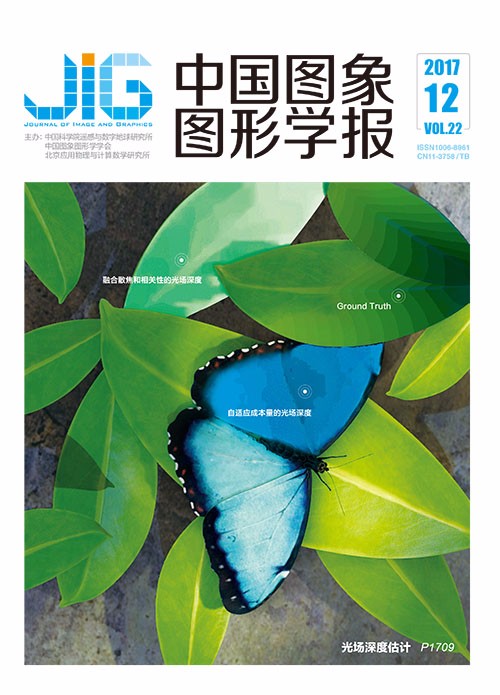
结合非监督分类和几何—纹理—光谱特征的高分影像道路提取
摘 要
目的 目前针对复杂场景高分辨率遥感影像道路提取多采用监督分类方法,但需要人工选择样本,自动化程度低且具有不稳定性。基于像元级的方法,提取完整度低且易产生椒盐噪声;面向对象的方法易产生粘连问题。为了提高道路提取的完整度、准确度和自动化程度,提出一种基于非监督分类和几何—纹理—光谱特征的道路提取方法。方法 首先考虑光谱特征利用非监督分类进行初步分割,结合基于纹理特征分类的结果得到初始道路区域。然后根据道路特征建立一套完整的非道路区域滤除体系:边缘滤波断开道路和非道路的连接、纹理滤波滤除大面积非道路区域、形状滤波去除剩余小面积非道路区域。最后利用张量投票算法得到连贯、平滑的道路中心线。结果 选择复杂场景下的高分辨率IKONOS影像和QuickBird影像进行实验,与国内外基于像素和面向对象的两种有代表性的道路提取方法进行对比,采用完整率、正确率、检测质量3个评价指标进行定量评价。实验结果表明该方法相比于其他算法在完整率、正确率和检测质量上平均提高26.61%、5.57%和26.77%。定性分析结果表明,本文方法可以有效改善椒盐噪声和粘连现象。此外本文方法的自动化程度更高。结论 提出了一种基于非监督分类和几何—纹理—光谱特征的高分辨遥感影像道路提取方法,非监督相对于监督分类的方法有更高的自动化程度,复杂场景下的道路提取融合几何—纹理—光谱特征有效避免了基于像元级道路提取易产生的椒盐噪声现象和面向对象道路提取易产生的粘连现象。该方法适用于高分辨率遥感影像城市道路提取,能够得到较高的完整度、准确度以及自动化程度。非监督分类和多特征结合的道路提取方法有广阔的应用前景。
关键词
Road extraction based on unsupervised classification and geometric- texture-spectral features for high-resolution remote sensing images
Han Jie, Guo Qing, Li An(Institute of Remote Sensing and Digital Earth, Chinese Academy of Sciences, Beijing 100094, China) Abstract
Objective Road extraction in complex scenes for high-resolution remote sensing images is mostly performed using the supervised classification method. However, this method requires the manual selection of samples, thereby leading to low degree of automation and instability. The pixel-based extraction method exhibits low completeness and can easily produce salt-and-pepper noise. The object-oriented method can easily produce adhesion problem. In this study, a road extraction method based on unsupervised classification and geometrical-textural-spectral features (i.e., unsupervised classification and fused features, UCFF) is proposed to improve the completeness, accuracy, and automation of road extraction. In the UCFF method, the unsupervised classification avoids the artificial sample selection steps; its fusion of spectral, geometrical, and textural features produces extraction results of high accuracy. The proposed UCFF road extraction method still presents high completeness and accuracy while improving the degree of automation. Method The UCFF method mainly includes three parts:the road candidate area extraction, non-road area filtering, and road centerline extraction. The road candidate area extraction involves two steps. First, spectral features are adopted for unsupervised classification. The ISODATA method is used in the unsupervised classification. However, the non-road area of similar spectral features is easily separated into roads by the unsupervised classification. Second, another classification based on textural feature is applied. Given that most of the non-road and road areas significantly differ in textural features, the classification based on textural feature can be used to distinguish road area from the non-road area with similar spectral features. The textural feature used is the variance of four different directions:horizontal, vertical, diagonal, and back-diagonal. A 3×3 sliding window with a center pixel is used to calculate the variance. When all the variances in four directions are less than the threshold, the center pixel is considered the road. By combining the two classification results, the road candidate region is obtained. For the non-road area filtering, edge, texture, and shape filters are gradually applied. The edge filter is used to disconnect road and non-road connections. A Canny method is performed to extract the edge. The roads are considered not on the edge. If a point in the image is an edge, then it is not the road. The textural feature is used to filter large non-road area that is wider than the road, such as large parking lots and buildings. In the binary image, the road is narrow and is a long connected area. A window that is slightly larger than the width of the road is selected. In this window, the textural feature value of the non-road area is less than that of the road area. When the textural feature value is less than the threshold, the center pixel is considered the non-road and should be filtered. Finally, a shape index (i.e., linear feature index) is used to filter the remaining small non-road area and thus extract the final road area. For the road centerline extraction, a tensor voting algorithm is used. Result Experiments on high-resolution remote sensing images are conducted to verify the effectiveness of the proposed method. High-resolution IKONOS images of Australia's Hobart region and QuickBird images of Texas, USA, in complex scenes are employed. Another two typical pixel-based and object-oriented road extraction methods at home and abroad are compared to further prove the feasibility and effectiveness of the proposed method. Three indexes of completeness, accuracy, and detection quality are used for quantitative evaluation. Quantitative analysis shows that the three indexes of the proposed method are averagely 26.61%, 5.57%, and 26.77% higher than those of the two other algorithms. The qualitative analysis also shows that the proposed method can effectively suppress the salt-and-pepper noise and adhesion phenomena. The method also presents high automation capability. The proposed road extraction method can be used mainly in complex scenes for high-resolution remote sensing images. The preliminary classification under unsupervised conditions can avoid the steps of sample selection in an automatic manner. The spectral feature is considered in the unsupervised classification, while the textural feature of road is fully utilized in the texture classification. Thereafter, the two road classification results are combined as the candidate region to effectively avoid the adhesion and salt-and-pepper noise phenomena. The road extraction results are smooth and complete. In the non-road filter stage, the specific nature of the road is fully used, which combines the edge, shape, and textural features to achieve the accuracy of road extraction. Conclusion A road extraction method for high-resolution remote sensing images based on unsupervised classification and geometrical-textural-spectral features is proposed. The unsupervised classification method possesses higher degree of automation than that of the supervised classification method. Road extraction under complex scenes based on geometrical-textural-spectral features can effectively avoid the salt-and-pepper noise and adhesion phenomena while obtaining high completeness and accuracy. This method is suitable for road extraction in complex scenes, such as cities, and achieves high completeness, accuracy, and automation. Unsupervised classification and multiple feature combination have broad application prospects in the road extraction. The theory can provide reference for other road extraction in future studies.
Keywords
|



 中国图象图形学报 │ 京ICP备05080539号-4 │ 本系统由
中国图象图形学报 │ 京ICP备05080539号-4 │ 本系统由